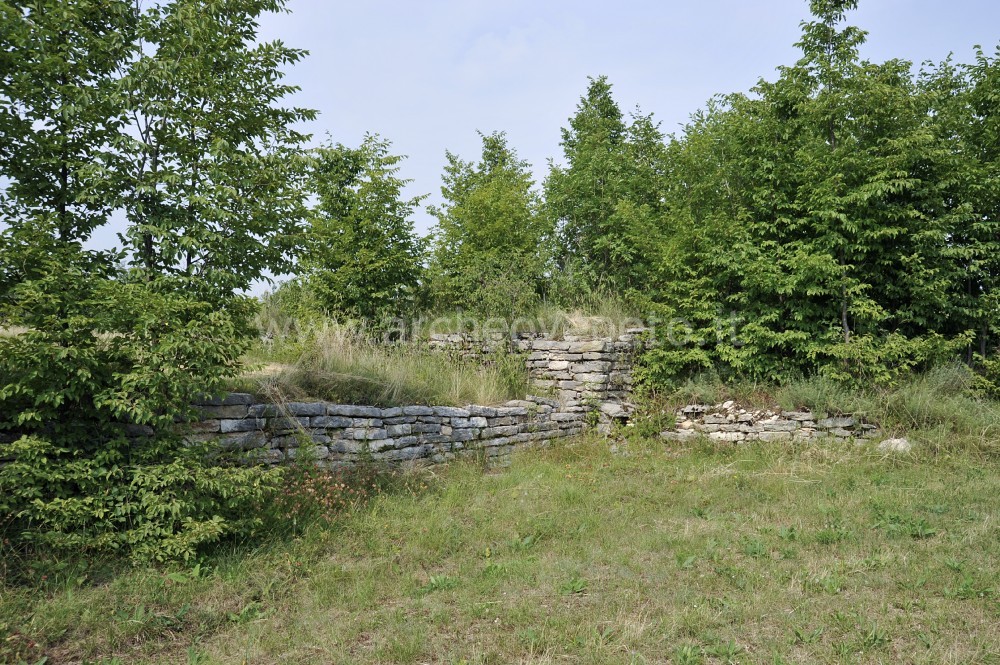|
|
File
Protohistoric settlement in the locality “Le Guaite” – Sant’Anna d’Alfaedo
|
| Via Castelliere, loc. Le Guaite – 37020 Sant’Anna d’Alfaedo (VR)
|
  |
|
Summary

The archaeological area of the locality “Le Guaite” in “Sant’Anna di Alfaedo” is constituted by the remains of the defensive walls that were built during middle and recent Bronze age in order to protect a hill settlement.
History of research
The excavations were carried out by between 1960 and 1961 by the Civic Museum of Natural History of Verona and between 1996 and 1997 by the General Direction for Archaeological Heritage in the Veneto region.
Urban and geographical context
The settlement “Le Guaite” is located in the Lessini mountains, on a hill between the Valpolicella and the Fumane valleys, at an altitude of about 850 metres above sea level and just out of the village of Sant’Anna di Alfaedo.
Chronology
Middle and recent Bronze age |

 The settlement “Le Guaite” at “Sant’Anna di Alfaedo” is constituted by a set of dry stone walls that represent the southern and most defended part of a prehistoric hill settlement of middle and late Bronze age (1700 – 1200 B.C.). The wall has a wedged shape and it is made with a load-bearing technique, that means through the construction of two parallel dry-stone walls filled in with small stones and soil. The wall is over 3 metres thick and suggests its defensive function. No trace is remaining of the rectangular huts that were found during the excavations. At present time the vegetation has covered great part of the ancient structures, which nevertheless are still visible. The settlement “Le Guaite” at “Sant’Anna di Alfaedo” is constituted by a set of dry stone walls that represent the southern and most defended part of a prehistoric hill settlement of middle and late Bronze age (1700 – 1200 B.C.). The wall has a wedged shape and it is made with a load-bearing technique, that means through the construction of two parallel dry-stone walls filled in with small stones and soil. The wall is over 3 metres thick and suggests its defensive function. No trace is remaining of the rectangular huts that were found during the excavations. At present time the vegetation has covered great part of the ancient structures, which nevertheless are still visible.
|
Admission: Libero
Visitability: Interno
Ticket: No
Price: Free entrance for the schools
 School access School access
Recommended tour time (minutes): 40
 Information boards Information boards
| Zorzi F. 1961, Sant’Anna di Alfaedo, in Rivista di Scienze Preistoriche, XVI, pp. 263. |
| Salzani L. 1981, Preistoria in Valpolicella, Verona. |
| Fasani L. 1984, L’età del Bronzo, in Il Veneto nell’antichità. Preistoria e Protostoria, a cura di Aspes A., Verona, pp. 451-614. |
| Bonetto J. 2009, Veneto (Archeologia delle Regioni d’Italia), Roma, pp. 463. |
|



 School access
School access Information boards
Information boards










